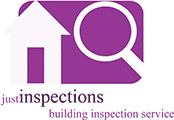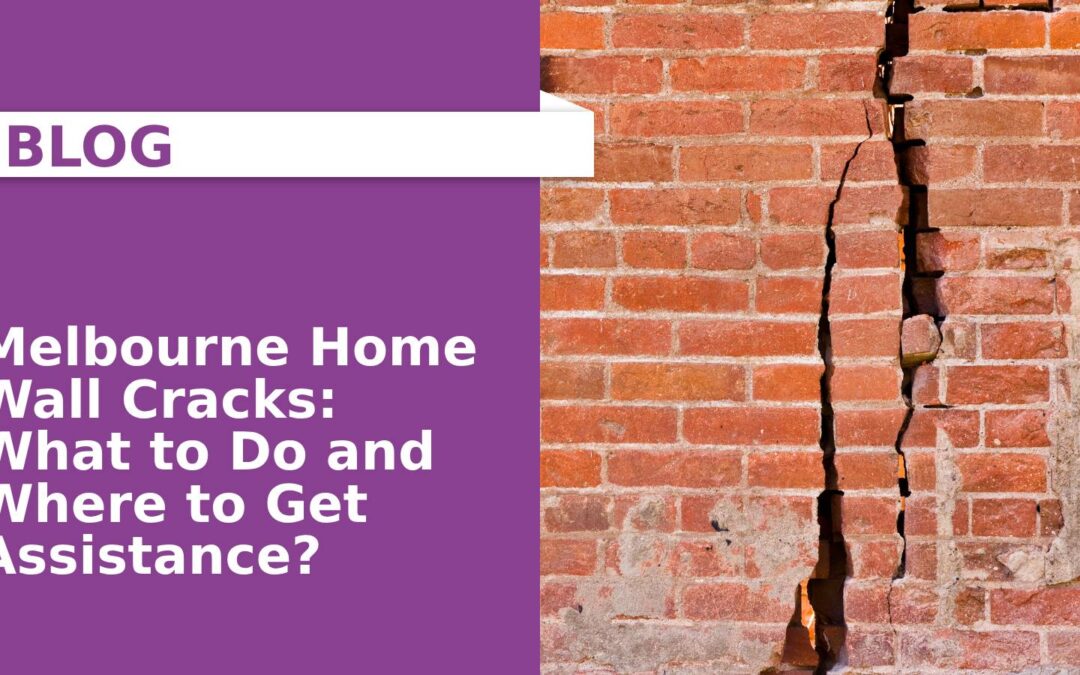Wall cracks are ugly, but they can also indicate a serious structural concern in a home. So, how can you know if the minor fracture in your lounge room wall will eventually grow into large, major cracks? Those freshly painted walls you fell in love with on the open-for-inspection day could be hiding a structural fault or fracture. What you need to determine is whether a crack in your wall can be readily repaired with a little amount of strategically placed filler and some paint or if costly structural repairs to your home are required.
If you underestimate cracks in walls, you could end up spending thousands to fix them. In this blog, we will talk about causes of wall and ceiling cracks, the importance of frequent inspections, warning indications of significant problems, and how Just Inspection can assist with diagnosis and resolution.
Understanding Cracks in Your Melbourne Home
Visible cracks in walls are a common indicator of structural problems. It is understandable to panic when you see cracks in the walls. Small hairline cracks are usually not a cause for concern, but wider or diagonal cracks may signal major concerns. You automatically think that your home has trouble spots and requires extensive repairs. You imagine the house coming apart in front of your eyes.
But what if we told you that not all cracks in plaster are structural major defects or construction faults? It could be natural settling that occurs after the home is built. If this is the case, the cracks may only require simple repairs, making your home as good as new. A few types of cracks don’t even require repair; they simply need time. How will you know if you need to worry or not? Just keep reading to learn more.
What Effect Do Local Factors Have on Building Foundations in Melbourne?
If you are aware of what lies beneath your houses, it can help us maintain our safety. Under Melbourne, the soil is more than simply dirt; it is a layer that responds to weather changes. When dried, this clay becomes hard. When it rains, it absorbs water and expands, putting strain on your foundation and causing shifting, cracking, and sagging.
Why Do Walls Crack?
Cracks in walls and ceilings can occur from a variety of causes. Before investing in repairs, it is critical to understand the causes of structural fixtures.
- Foundation Movement: Cracks can form as a result of foundation movement caused by soil subsidence or sag, especially in areas with reactive clay soils, such as Melbourne. This movement may result in stuck windows and doors. Small changes can result in easy fixes.
- Settlement: Newly built structures frequently develop fractures as they settle under their weight and the foundations compact, finally stabilising. Sag and sinking can occur in older structures as a result of poor drainage, surrounding trees, mining, or weak soil.
- Thermal Expansion and Contraction: Temperature variations cause building materials to expand and contract, resulting in cracks. Less flexible materials are more prone to heat movement.
- Moisture Intrusion: Cracks can occur when building components get damaged by water leaks or poor drainage. Poor waterproofing is a typical concern, with hairline fractures allowing moisture to penetrate. Freeze-thaw cycles can worsen the situation.
- Poor Construction: Cracks can be the result of structural flaws caused by poor mastery or materials. According to recent research, many Australians live in homes with serious faults as a result of poor building industry oversight.
- Natural Disasters: Accidents such as floods or earthquakes can create abrupt structural changes, resulting in cracks.
- Drywall Movement: Nail pops happen when nails emerge from drywall, which is usually caused by the drying and shrinking of the wood frame. Significant nail pops may indicate drywall displacement, but they usually require only minor repairs.
Types of Wall and Ceiling Cracks
- Hairline cracks are cracks less than 1/8 inch wide, at the surface of the wall, and caused by minor settling or minor temperature fluctuation.
- Vertical cracks are straight up and down cracks in the wall that suggest minor settlement of the foundation or shrinking of the framing. It isn’t anything bad about how the house was built and is never considered to be potentially serious enough. Once that foundation is completely settled after building, you will no longer see cracks.
- Horizontal cracks parallel to the floor or ceiling often indicate major issues such as water damage, a shifting foundation, or other serious structural issues. Horizontal cracks are usually a cause for concern and should be addressed right away as soon as you notice them.
- Diagonal cracks across the wall indicate structural problems, such as poor footing or slab work, which could be a threat to the building. Professional help should be sought immediately.
- Water damage cracks appear in various shapes and sizes, and they often exhibit signs of mould or mildew.
When Should Homeowners Worry About the Cracks?
Do you see cracks in walls and ceilings? When to worry? Wall inspections are carried out to find out structural issues early on and address them before they worsen. Regular inspections are particularly important in Australia, where different soil types and weather conditions can have an impact on structures. Minor cracks, if not corrected, might evolve into more costly flaws that endanger inhabitants’ safety. Characteristics that may indicate more serious problems are:
- If you see the cracks getting bigger than 5 mm, they are to be inspected professionally.
- Diagonal or horizontal cracks near doors or windows could be structural problems.
- Large cracks in the ceiling and walls indicate serious damage as well.
- Widening or fresh cracks indicate continuous movement, requiring professional intervention.
How Just Inspections Can Detect and Repair Wall Cracks
We know your building is probably one of the biggest investments of your lifetime. You need professionals who understand the cause of the cracks and will give you the right information. Only repairing the cosmetic appearance of the crack does not repair the root problem. The cracks will only reappear, and the damage underneath will worsen. The experts at Just Inspections provide wall inspection in Melbourne and other surrounding areas that help identify structural major and minor defects, and this will help you to choose the next best step.
The final report outlines the severity of the cracks in detail, as well as the necessary repair work, using the most recent diagnostic techniques and all Australian building standards. In addition to crack detection and investigation, Just Inspections advises clients on how to prevent future structural failures. Our inspectors do a great job of inspecting the building for potential problems. If cracks are merely repaired without knowing what is going on underneath, the problem may worsen. Wall cracks are not always harmful, but a defective foundation or rotten slab can cause major problems in the future.
If you see any wall cracks and think, “My walls are cracking,” you should know that you should give us a call right away. We will make a proper inspection of the house and try to establish why these cracks have emerged. We will give you our professional assessment and opinion so that you know what to do from there.
In Summary
Cracks in the walls and ceilings must never be taken lightly. You need to know what causes them, and when to call for help would be a very good means of maintaining the health of your house’s structure.
Routine and thorough inspection by professionals, like Just Inspections, will detect possible problems before they become big ones. Thus, property owners keep their homes safe from further damages and maintain a healthy environment to live in.
Take a Step Towards Protecting Your Walls and Ceilings
Cracks in walls might be concerning. Do you want to know why your home has cracks on the wall and get a solution for them as well?
Get in touch with structural building inspections to find out what caused the cracks before rushing into urgent repairs. This allows you to avoid unneeded repair costs. We provide high-quality building and pest inspection services. Contact us at 1300558119, email us at [email protected] to schedule an appointment, and even set up an inspection in Melbourne.


I have cracks in my house walls which needs inspection
Hi Just Inspections – a room in my house has recently sustained a large number of cracks, and I am looking to identify the cause/root of the problem. Can you please advise the cost of an inspection? Thanks